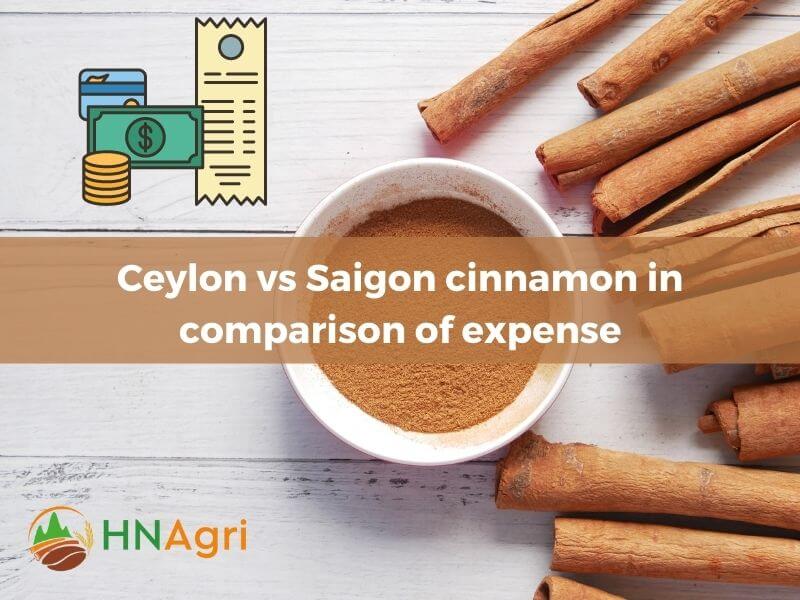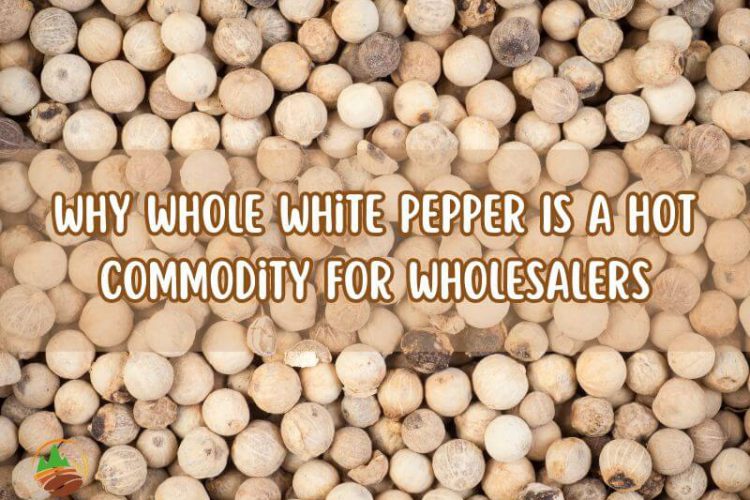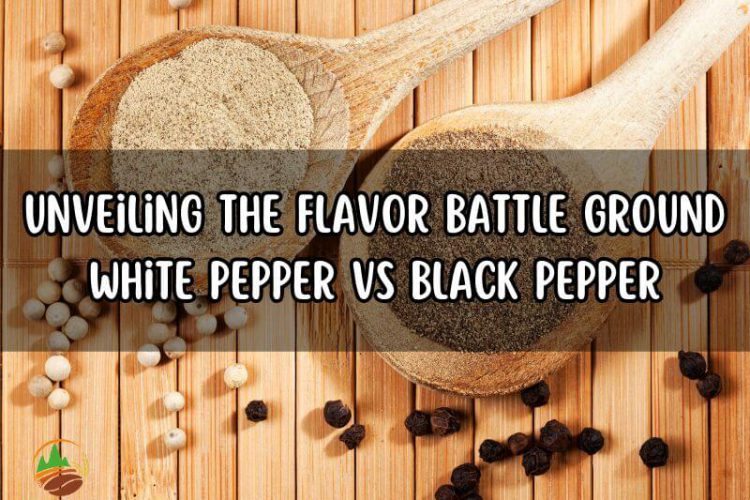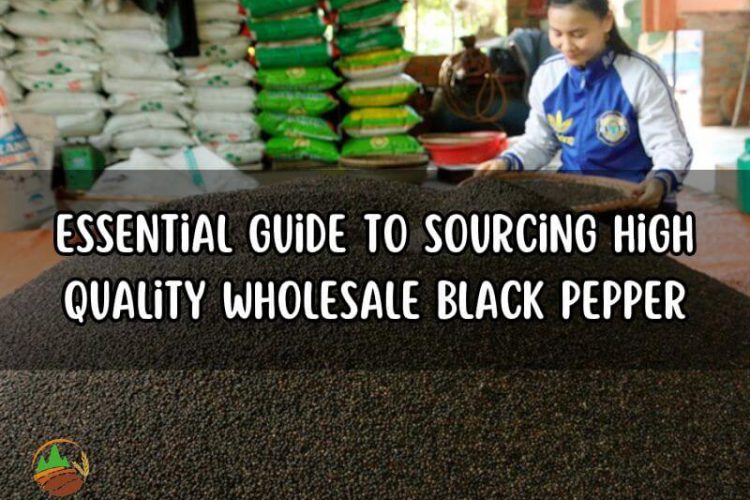If you’re considering starting a trading business that deals with cinnamon products and you’re interested in understanding the distinctions between Ceylon vs Saigon cinnamon, this article will provide the information you need.
Table of contents
- 1. 1. Questions regarding the variances between Ceylon vs Saigon cinnamon
- 2. 2. Answers for questions related to Ceylon vs Saigon cinnamon
- 2.1. 2.1. Ceylon vs Saigon cinnamon in comparison of color, size, fragrance and flavor
- 2.2. 2.2. Ceylon vs Saigon cinnamon in comparison of oil level, moisture content and coumarin
- 2.3. 2.3. Ceylon vs Saigon cinnamon in comparison of storage time
- 2.4. 2.4. Ceylon vs Saigon cinnamon in comparison of growing areas and quantity
- 2.5. 2.5. Saigon cinnamon vs Ceylon in comparison of health advantages
- 2.6. 2.6. Ceylon vs Saigon cinnamon in comparison of expense
1. Questions regarding the variances between Ceylon vs Saigon cinnamon
Here are the commonly questions related to the difference between Ceylon vs Saigon cinnamon:
- Ceylon vs Saigon cinnamon in comparison of color, size, fragrance and flavor
- Ceylon vs Saigon cinnamon in comparison of oil level, moisture content and coumarin
- Ceylon vs Saigon cinnamon in comparison of storage time
- Ceylon vs Saigon cinnamon in comparison of raw material areas and quantity
- Ceylon vs Saigon cinnamon in comparison of health benefits comparison
- Ceylon vs Saigon cinnamon in comparison of price comparison
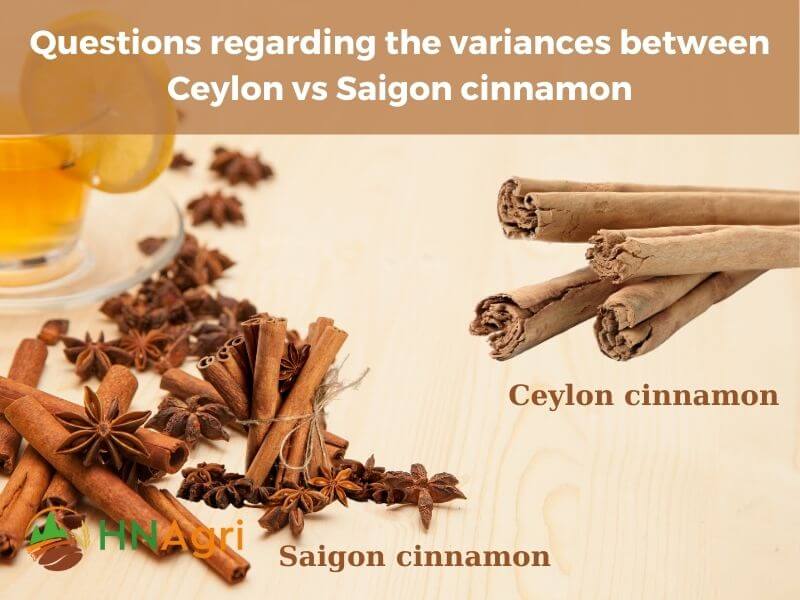
Questions regarding the variances between Saigon cinnamon vs Ceylon
2. Answers for questions related to Ceylon vs Saigon cinnamon
It’s time to discover the distinctions between Saigon cinnamon vs Ceylon.
2.1. Ceylon vs Saigon cinnamon in comparison of color, size, fragrance and flavor
Appearance can play a significant role in your decision-making process when choosing between Ceylon cinnamon and Saigon cinnamon.
| Ceylon cinnamon | Saigon cinnamon | |
| Color | tan to light brown | deep reddish-brown hue |
| Size | 5-10 cm (2-4 inches) in length and 0.5-1 cm (0.2-0.4 inches) in diameter. | 10-15 cm (4-6 inches) in length and 1-2 cm (0.4-0.8 inches) in diameter |
| Fragrance | pleasingly fragrant, with citrusy notes, a subtle floral undertone and hints of vanilla | sweet and spicy aroma |
| Flavor | sweet taste with subtle notes of citrus and clove | rich, bold, and slightly sweet, heat and a potent spicy kick |
- In comparison of appearance between Saigon cinnamon vs Ceylon, Ceylon cinnamon is often preferred for decorative purposes and as a coloring agent because of its lighter shade and delicate appearance. Moreover, the smaller size of Ceylon cinnamon makes it easier to transport, whereas the larger size of Saigon cinnamon poses a higher risk of breakage during delivery.
- When it comes to the scent of Saigon cinnamon vs Ceylon, personal preference is a significant factor. Cinnamon Saigon has a potent, spicy aroma infused with a hint of sweetness and cloves, while Ceylon cinnamon boasts a subtle, sweet fragrance with a touch of citrus and mild spiciness. Thus, the preference is different depending on whether one likes the robust fragrance of Saigon cinnamon or the milder scent of Ceylon cinnamon.
- In terms of flavor, Ceylon cinnamon surpasses Saigon cinnamon in terms of subtlety. Ceylon cinnamon is known for its nuanced and intricate flavor profile, which enables it to harmonize effortlessly with other ingredients in recipes without dominating them.
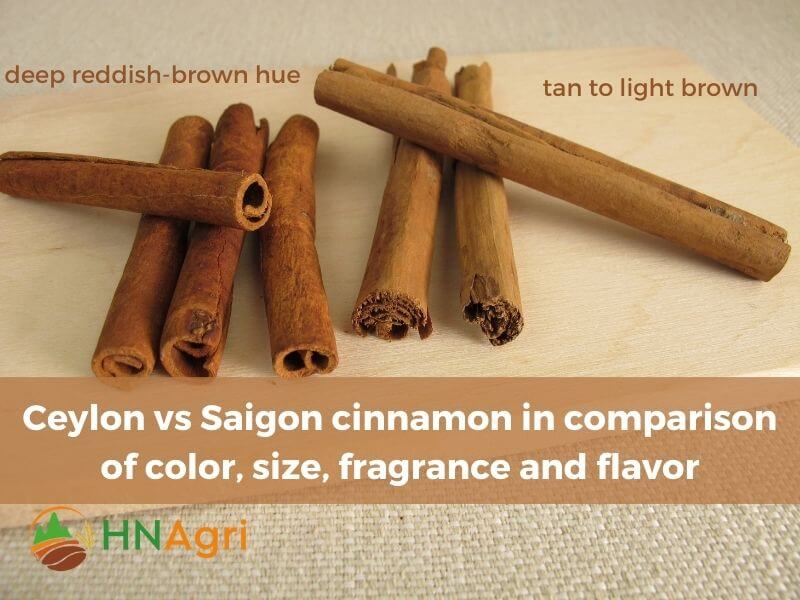
Ceylon vs Saigon cinnamon in comparison of color, size, fragrance and flavor
2.2. Ceylon vs Saigon cinnamon in comparison of oil level, moisture content and coumarin
The substance content and chemical composition of Ceylon cinnamon and Saigon cinnamon also vary, encompassing distinctions in their moisture content, oil content, and levels of coumarin.
| Saigon cinnamon | Ceylon cinnamon | |
| Oil content | 2-6% | 0.5-2.5%. |
| Moisture | 12% | 8-10% |
| Coumarin level | 0.5-3% | 0.4-1% |
- Oil level: In comparison of oil content between Ceylon cinnamon vs Saigon cinnamon, Saigon cinnamon typically possesses a higher oil content. This elevated oil content in Saigon cinnamon has the potential to yield a larger quantity of cinnamon oil during the extraction process. Cinnamon oil finds extensive applications in the culinary realm, aromatherapy, and the fragrance industry. Therefore, if the objective is to obtain the highest possible amount of essential oils through extraction, Saigon cinnamon would be an excellent choice.
- Moisture content: Ceylon cinnamon exhibits a lower moisture content when compared to Saigon cinnamon. Increased moisture levels can create an environment conducive to microbial growth and spoilage. This can potentially lead to issues such as clumping or mold formation, which can impact the spice’s shelf life and safety. Consequently, greater preservation efforts are necessary for Saigon cinnamon.
- Coumarin: Coumarin, a naturally present compound in various plants like cinnamon, is found in higher concentrations in Saigon cinnamon compared to Ceylon cinnamon. Consuming excessive amounts of coumarin can have adverse effects on the liver. Consequently, Ceylon cinnamon is regarded as a safer option for consumption, particularly in larger quantities. Therefore, purchasing Ceylon cinnamon in bulk is also interested by many businesses today. Ceylon cinnamon contains minimal traces of coumarin, whereas Saigon cinnamon can contain up to 4% coumarin.
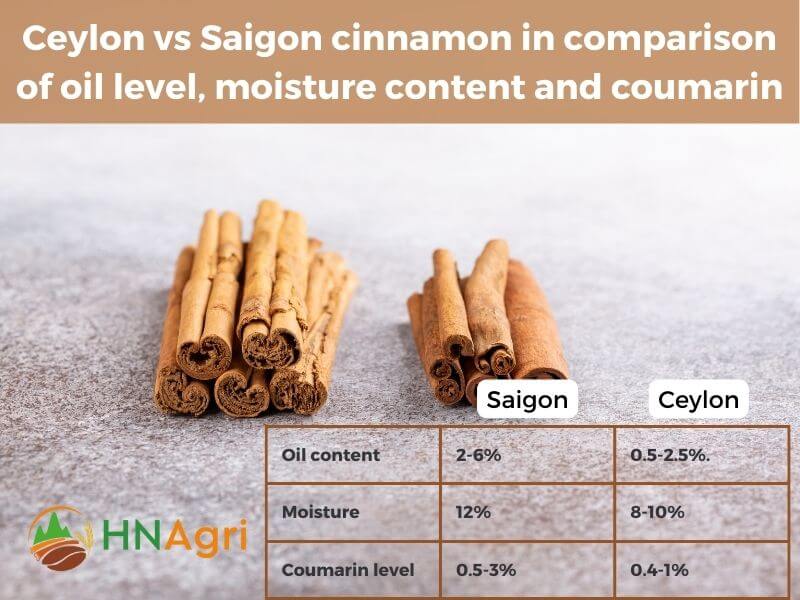
Ceylon vs Saigon cinnamon in comparison of oil level, moisture content and coumarin
2.3. Ceylon vs Saigon cinnamon in comparison of storage time
| Saigon cinnamon | Ceylon cinnamon | |
| Expiration date | 18 – 30 months | 2 – 3 years |
| Storage method | After drying, arrange cinnamon bark carefully in plastic bags to maintain quality. Store cinnamon essential oil, which can corrode metal, in enameled or plastic food containers after distillation. Seal the container and optionally add a thin layer of water to minimize evaporation and oxygen contact. Store both dried cinnamon bark and cinnamon essential oil in a cool, dry place, away from direct sunlight. | |
In general, Ceylon cinnamon tends to have a slightly extended shelf life in comparison to Saigon cinnamon. This is mainly attributed to Ceylon cinnamon’s lower oil content, as mentioned earlier, which contributes to a longer preservation of its flavor and aroma. When stored correctly, with no exposure to air, Ceylon cinnamon can retain its quality for approximately 2 to 3 years, while Saigon cinnamon can maintain its quality for about 18 to 30 months.
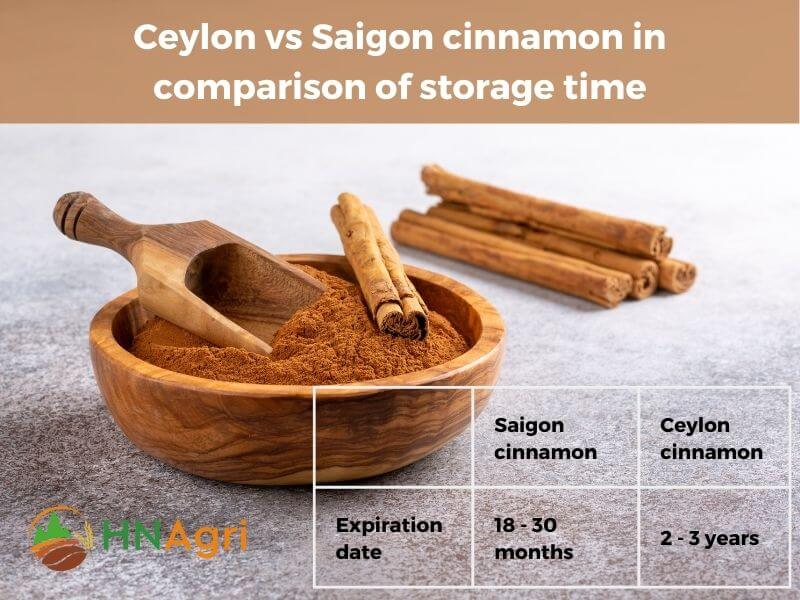
2.4. Ceylon vs Saigon cinnamon in comparison of growing areas and quantity
In terms of quantity, cassia cinnamon is produced in much larger quantities than Ceylon cinnamon:
| Saigon cinnamon | Ceylon | |
| Growing areas | Vietnam | Sri Lanka |
| Quantity | Around 70,000 to 80,000 metric tons | Around 23,000 metric tons |
Saigon cinnamon, cultivated in Vietnam, covers a substantial area of 81,000 hectares, whereas Ceylon cinnamon is predominantly grown in Sri Lanka on a smaller scale of only 25,500 hectares. In terms of global production in 2022, Saigon cinnamon reached an estimated 70,000 to 80,000 metric tons, surpassing Ceylon cinnamon, which yielded around 23,000 metric tons. If you are looking for a readily available and cost-effective cinnamon variety with a high production output, Saigon cinnamon would be the preferable option. And if you’re interested in ceylon cinnamon, price of ceylon cinnamon in Sri Lanka will make you surprised.
2.5. Saigon cinnamon vs Ceylon in comparison of health advantages
Both Ceylon and Saigon cinnamon offer potential health benefits attributed to their active compounds, such as antioxidants and anti-inflammatory properties. Nonetheless, there exist distinctions in the health benefits between Ceylon vs Saigon cinnamon:
| Saigon cinnamon | Ceylon cinnamon | |
| Health advantages |
|
|
| Liver impact | Overdose of cassia cinnamon can be toxic to the liver | Safe for the liver |
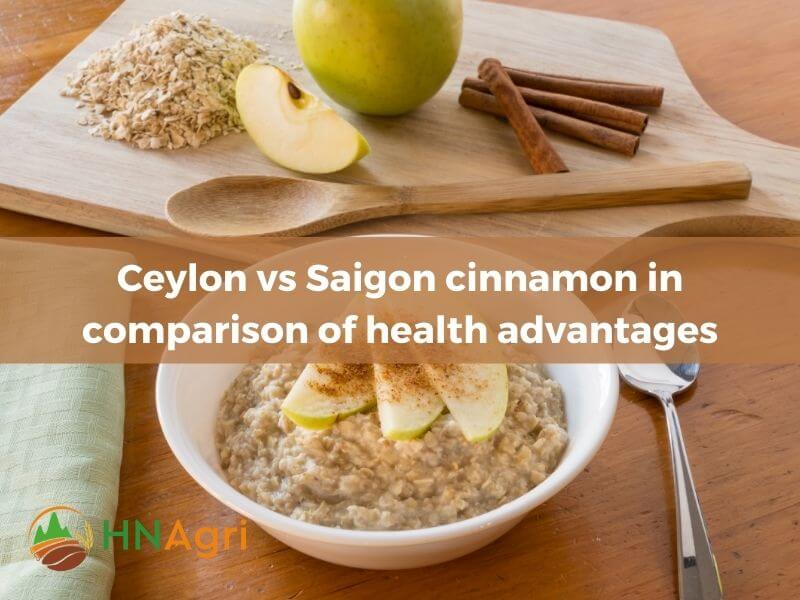
2.6. Ceylon vs Saigon cinnamon in comparison of expense
| Saigon cinnamon | Ceylon cinnamon | |
| Average price | $2830 to $6320 per ton | $10000 to $25000 per ton |
As of May 2023, the wholesale price of Saigon cinnamon averages between $2830 and $6320 per ton. In contrast, wholesale Ceylon cinnamon is priced between $10,000 and $25,000 per kilogram, which is approximately 3 to 4 times higher than the price of Saigon cinnamon.
Typically, Ceylon cinnamon commands a higher price compared to Saigon cinnamon due to its superior quality, limited cultivation, and lower production quantity. Conversely, Saigon cinnamon is known for its robust flavor and finds widespread use in the food industry. It is more readily available and affordable compared to Ceylon cinnamon.
